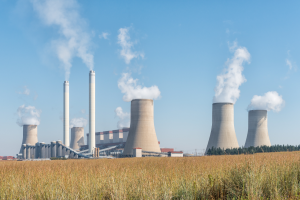Bless the winds in South Africa

Energy regulator Nersa has published its latest renewable energy monitoring report, showing how the commercially operating renewable projects in South Africa have exceeded their obligations and helped stem load shedding this year.
The reports form part of Nersa’s mandate to monitor information relating to power sources in South Africa, with the independent renewable energy (RE) power producers required to submit data on monthly energy production and other operational details to the regulator.
To date, the total RE capacity allegation from ministerial determinations in South Africa is at 36,700MW, with 28,900MW of this being in effect.
The Department of Mineral Resources and Energy has procured 9,881MW from 142 RE independent power producers across nine bid windows.
Since 2013, Renewable Energy Independent Power Producer Procurement Programme projects have been connected to the grid in a phased-in approach, and by the end of June 2023, total grid-installed capacity of these projects was at 6,184MW, Nersa said.
Most of this (6,149MW) is in commercial operation.

In the first half of 2023 (January to June), these projects have generated over 8,300 gigawatt hours (GWh) of energy – much higher than the same period in 2022. This was largely attributable to improved wind energy sources, Nersa said.
Staving off load shedding
According to Nersa, while the load factors of the various renewable energy sources is relatively low, they remain within acceptable levels for South Africa.
Load factors typically represent the efficiency of use of the energy sources available. A high load factor would show energy being used efficiently.
The highest load factors were achieved by biomass and small-hydro, with 74% and 58%, respectively. The load factors of wind, solar PV and concentrated solar power plants were 35%, 24% and 33%, respectively.
Nersa said that the contribution from various renewable technologies went a long way in staving off higher levels of load shedding this year, with wind alone contributing more than 1,000MW hour on hour for more than three consecutive days in March, effectively cutting load shedding by one stage.

“The combined peak energy contribution of REI4P power plants was about 1,782GWh, which was approximately 21% of the total REI4P energy sent out in that period,” Nersa said.
“It has been demonstrated by the CSIR that when the power system is constrained, renewable energy sources are useful in that they assist in reducing the hours of load-shedding or even prevent such a situation from arising.”
Citing further data from the Bureau for Economic Research (BER), Nersa said that a reduction between demand and supply is clearly observed when renewables are factored in.
Adding to the positive news for renewables is the much-reduced cost of the technologies, the regulator said.
“It is evident from the levelised cost trends of solar PV and wind technologies that there has been a significant decrease over the past ten years, and this can be attributed mainly to the capital cost reductions of these technologies,” it said.
Between 2010 and 2020 the global weighted average levelised cost of energy for utility-scale solar PV for newly commissioned projects fell by 85%. For wind, the drop was 56%.

While the costs per kWh varies depending on the technology used, Nersa calculated the average cost at R1.99/kWh across all renewables.
Wind was the cheapest at R1.33/kWh, while concentrated solar was the most expensive at R4.91/kWh.
RE plants also had to curtail a lot of energy over the period, Nersa said, largely due to periods of low demand – typically in the early hours of the morning or at night.
However, in the overall assessments of RE operations, Nersa found that projects in commercial operation exceeded their employment, ownership and procurement obligations prescribed by the DMRE in all quarters.
The full review can be read below:


















